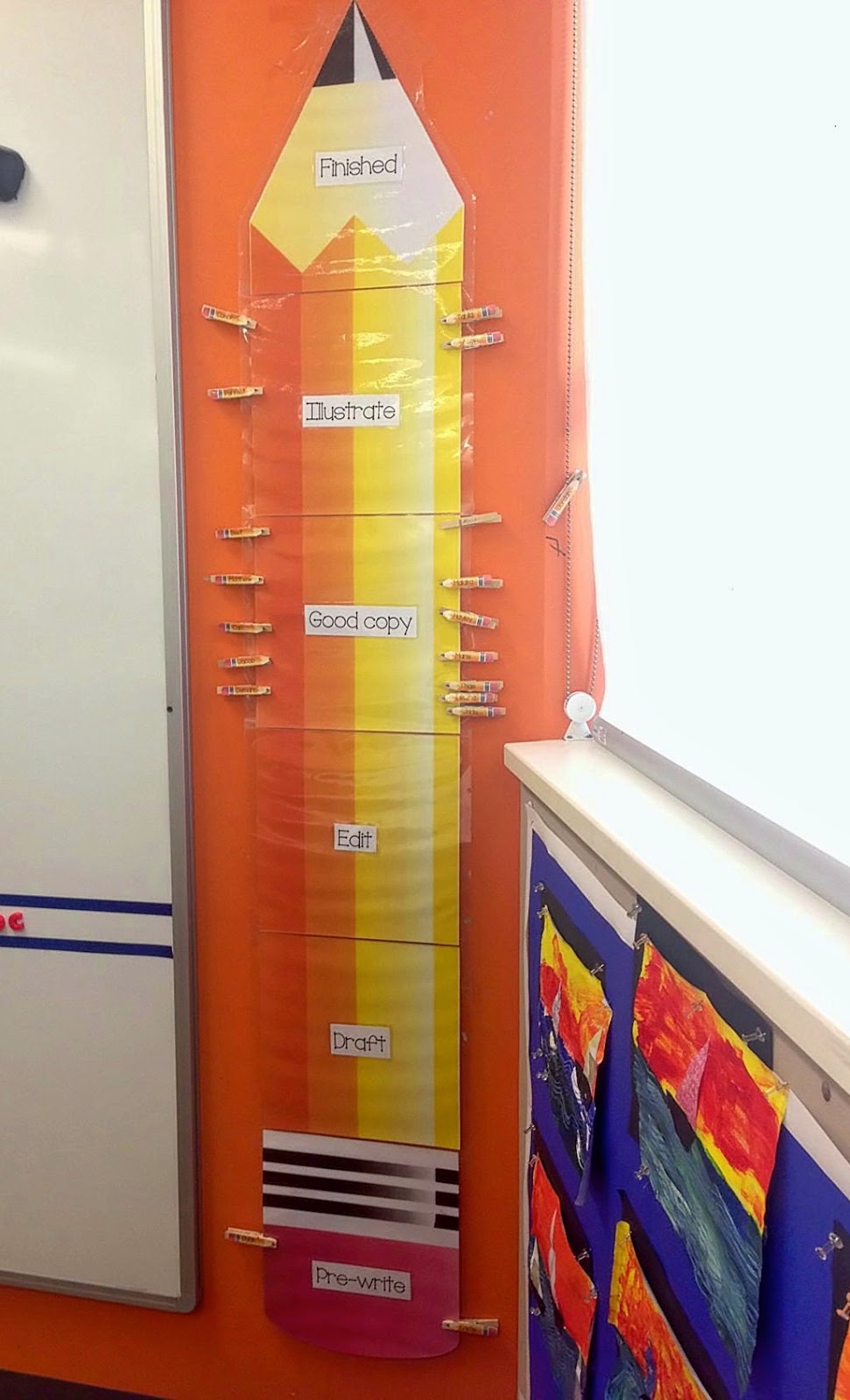Don't you just love it when you come across a teaching strategy and you don't understand how you ever managed without it? That's exactly how I feel about my Writing Process Pencil!

I got this idea from pinterest and thought I'd make my own version and give it a go. My students each have a pencil peg with their name on it. All pegs start on 'Pre-write' and then as they progress with their writing, they move their peg onto the next stage until they have reached the tip of the pencil which is the 'Finished' section. I LOVE using this for my writing tasks. Each section of the pencil has a different writing stage; Pre-write, Draft, Edit, Good Copy, Illustration and Finished.
Pre-Write
All the student's pencil pegs start on the 'Pre-Write' section. During this phase students brainstorm what they want to write about. They may also have a chat to the person next to them for some ideas and inspiration. This is also the time to write the title and date on their work.
Draft
Once students have completed the pre-write phase they move their pencil peg onto the 'Draft' section. This is when students begin their actual writing. Once they have finished their draft they need to re-read it to make sure it makes sense, then they can move their pencil peg up to the 'Edit' section.
 Edit
Edit
During the 'Edit' phase, students come to me so I can check their spelling and grammar. I underline words that they have spelt incorrectly and ask them to either try and spell the word again, or check their dictionaries for the correct spelling. I also give them feedback on their work. The only time I will check students work is when they are right next to me. I've realised there's no point in checking and correcting work when the writer is not there- how often will my year 3's actually flick through previous writing work to see what errors had been corrected?!
 Good Copy
Good Copy
After students have corrected all their errors, students move onto writing their good copy. I only use this section if I'm planning to put their writing on display, like my
Earth Day writing task or my creative writing
If I had a million dollars task. If they are just doing writing in their writing books, they skip this phase and move onto the illustration section
Illustration
I always get my students to draw a picture when they have finished their writing. It doesn't have to be a big fancy picture (although some students prefer it to be that way!) just something small and neat so that they can really value their work! Presentation is important!
 Finished
Finished
This part speaks for itself- the student has finished their writing task!
I've found this pencil gives students accountability and really motivates them to stay on task- everyone wants their peg on the 'Finished' section by the end of the lesson! It also gives me an indication of where each student is at with their work. If a student has remained on the 'Pre-Write' section for a while, I'll ask if they need some assistance with their work. If I feel like someone is flying through the stages, I'll make sure they are on the right track
and their work is NEAT.
Keep smiling!
Miss A
 Follow the dot pattern on the colour mixing sheet using the food colouring- make sure your students have one pipette per colour!
Follow the dot pattern on the colour mixing sheet using the food colouring- make sure your students have one pipette per colour! Gently place the paper towel over the colour mixing sheet and watch the colours form!
Gently place the paper towel over the colour mixing sheet and watch the colours form!


























